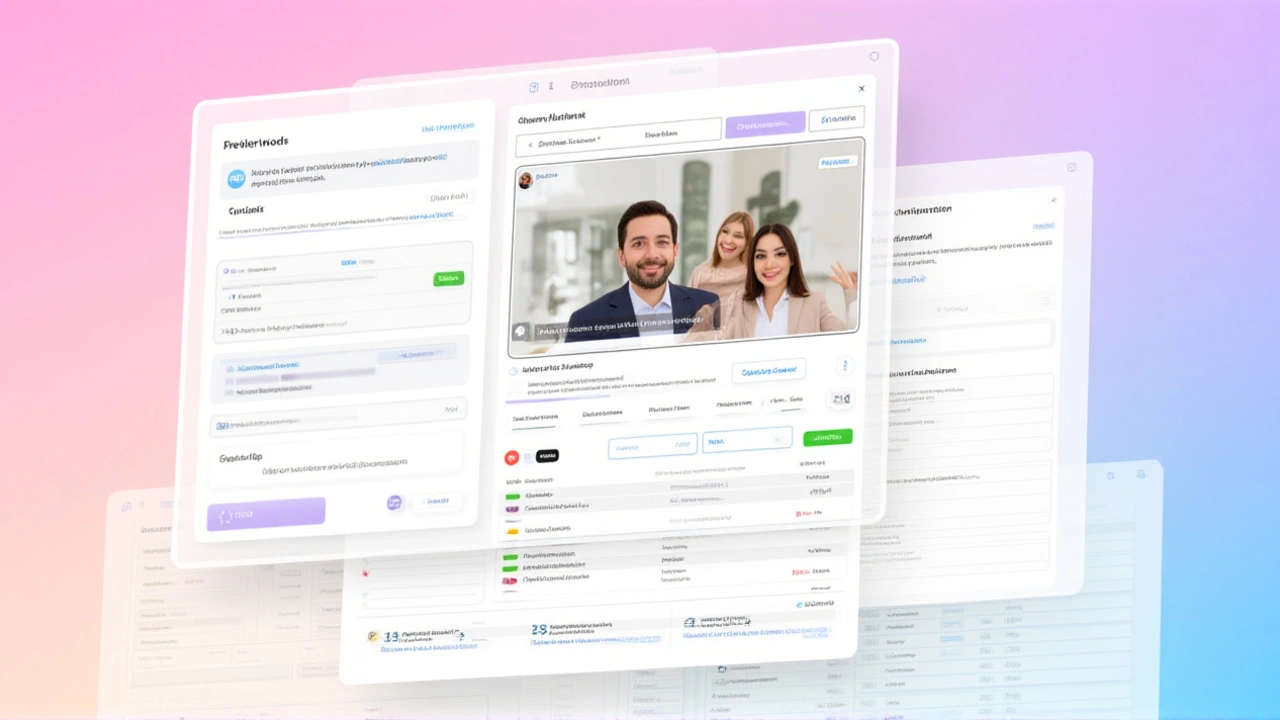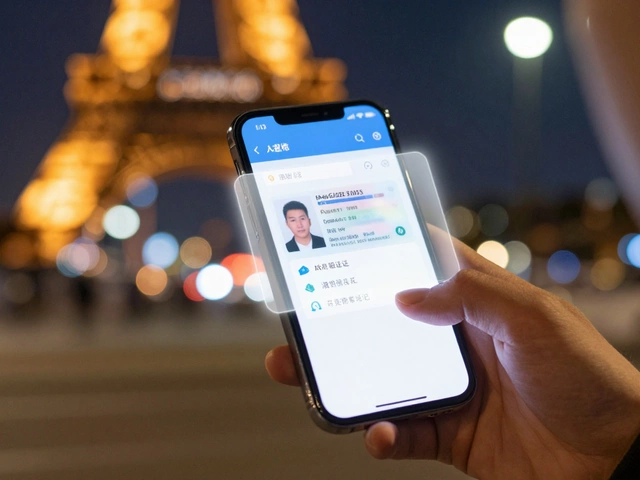On October 9, 2025, Microsoft quietly rolled out a game-changing update to Copilot on Windows—one that finally lets the AI assistant talk to your Google accounts. The new Connectors feature, appearing in version 1.25095.161.0 and higher via the Microsoft Store, lets Copilot pull data from OneDrive, Outlook, Google Drive, Gmail, Google Calendar, and Google Contacts. No more switching tabs. No more copy-pasting. Just ask Copilot to find that contract you saved in Google Drive last Tuesday, and it pulls it up—along with the email thread and calendar invite tied to it. This isn’t just convenience. It’s a quiet revolution in how we work.
Why This Matters More Than You Think
For years, Microsoft pushed users to live inside its ecosystem. Now, it’s admitting that’s not how most people work. The average professional juggles Microsoft and Google tools daily. Sales teams use Outlook for scheduling but Google Docs for client proposals. Marketers store assets in Drive but track deadlines in Calendar. Microsoft’s decision to bridge these gaps isn’t just user-friendly—it’s strategic. By letting Copilot operate across platforms, Microsoft is betting that the future of AI assistants isn’t about locking you in, but about becoming the central nervous system of your digital life—no matter where your files live.
The Bigger Picture: MCP, Cloud PCs, and the Frontier Firm
This isn’t an isolated feature. It’s the tip of a much larger iceberg. Back in September 2025, Microsoft introduced MCP (Microsoft Copilot Platform) connectors in Copilot Studio, letting developers connect custom AI agents to external systems with just a URL. No code. No API keys. Just drag-and-drop integration. Then, in October, the Microsoft 365 admin center gained unified controls for managing all these agents—blocking them, auditing usage, setting permissions. Suddenly, IT departments could see every AI agent in their organization, not just Microsoft’s.
And here’s the kicker: all of this runs on Windows 365. At Microsoft Ignite 2025Seattle, Microsoft unveiled how Windows 365 powers secure, cloud-based agent environments. AI agents can now browse the web, extract data from PDFs, and fill out forms—all inside a policy-controlled Cloud PC streamed from Microsoft’s servers. No local data storage. No compliance headaches. Just clean, auditable AI behavior.
Who’s Using This—and How?
Microsoft says over 90% of the Fortune 500 use Microsoft 365 Copilot. That’s not hype—it’s data. And now, those enterprises are getting tools to scale AI safely. A marketing team in Chicago can ask Copilot to summarize Q3 campaign results from Google Analytics, pull the latest brand guidelines from OneDrive, and draft a Slack message to the design team—all without leaving the chat. A finance officer in London can request a comparison of vendor invoices stored in Gmail attachments versus those in SharePoint. The AI doesn’t just search—it understands context, timelines, and relationships.
Even more telling: Microsoft’s November 2025 update introduced Teams Mode for Copilot, turning private AI chats into group conversations. Now, your assistant doesn’t just help you—it helps your team. Imagine a project manager asking Copilot to draft a status update, then inviting three colleagues to refine it together. The AI remembers their edits, tracks changes, and even flags conflicting deadlines from their calendars. It’s not science fiction. It’s live.

Security, Control, and the Quiet Power of Compliance
Microsoft didn’t just build connectors. It built guardrails. The Copilot Chat API, launched in October, lets developers integrate Copilot into internal tools without data leaving Microsoft’s secure environment. No data egress. No third-party servers. Everything stays within enterprise boundaries. That’s why banks, hospitals, and law firms are adopting this faster than any previous AI tool.
And it’s not just about locking things down—it’s about visibility. Admins can now see which agents are active, who’s using them, and what data they’re accessing. If someone tries to have Copilot pull sensitive HR files from Google Drive, the system can block it. If an agent starts generating reports outside approved templates, it flags the behavior. This isn’t just AI. It’s AI with a compliance officer built in.
What’s Next? The AI Workplace Is Here
Microsoft’s vision, called the Frontier Firm, is simple: organizations run by humans—but powered by agents. Copilot isn’t replacing you. It’s your co-pilot. And with over 400 new features shipped in the last year, Microsoft is moving fast. Next up? Better voice integration, real-time translation during meetings, and AI-generated meeting summaries that auto-update your task lists. Expect deeper integration with third-party tools like Salesforce and Slack by early 2026.
For now, the rollout is gradual. Not every Windows Insider gets the update immediately. Microsoft’s testing for stability. But once it hits general availability—likely by January 2026—this won’t be a premium feature. It’ll be the baseline. The question isn’t whether you’ll use it. It’s whether you’ll remember working any other way.
Frequently Asked Questions
Can Copilot on Windows access my personal Google data without me knowing?
No. Copilot requires explicit, two-step authentication for every Google account you connect. You’ll see a consent screen in your browser listing exactly what data Copilot can access—emails, contacts, calendar events—and you must approve each permission. Microsoft doesn’t store your Google passwords or content. It only caches temporary metadata to improve responses, and you can delete that history anytime in Settings.
Does this mean I need a Microsoft 365 subscription to use Copilot Connectors?
No. The Connectors feature is available to all Windows Insiders running version 1.25095.161.0 or higher, even on free Windows accounts. However, to use advanced features like Teams Mode, the Copilot Chat API, or Cloud PC-based agents, you’ll need a Microsoft 365 Business or Enterprise plan. Basic cross-platform search and file retrieval work without a subscription.
How secure is the Windows 365 Cloud PC for AI agents?
Extremely. Each agent runs in an isolated, encrypted Cloud PC that’s wiped clean after every session. No files are saved locally. Network traffic is encrypted end-to-end, and administrators can enforce policies like blocking external websites or restricting file uploads. Microsoft says these Cloud PCs have been audited by third-party security firms and meet FedRAMP, ISO 27001, and GDPR standards.
Will Copilot eventually replace my email client or file manager?
Not replace—augment. You’ll still open Outlook or File Explorer when you need precision. But Copilot lets you skip the navigation. Instead of hunting for a file, you say, “Find the budget doc from last month with the red highlights.” It finds it, opens it, and even extracts the key numbers. Think of it like voice search for your entire digital workspace—faster, smarter, and deeply personal.
What happens if I switch from Google to Microsoft services later?
Your Copilot settings are tied to your Microsoft account, not your data source. If you migrate from Gmail to Outlook, you can simply disconnect your Google account and reconnect your Microsoft one. Copilot will automatically update its knowledge base to reflect your new data locations. Historical prompts and summaries remain intact—you just lose access to the old Google data unless you export it first.
Are there limits to how many accounts I can connect?
Currently, you can link up to three personal Google accounts and one Microsoft account per device. For businesses, IT admins can configure policies to allow multiple accounts per user, but each connection requires individual approval and is subject to organizational compliance rules. Microsoft hasn’t announced a hard cap yet, but performance may degrade if more than five accounts are active simultaneously.




